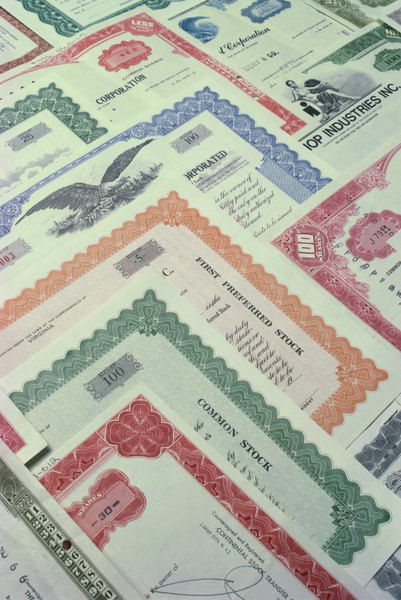How Long Does it Take for Series EE Savings Bonds to Reach Face Value?
Savings bonds are issued at face value.
Jupiterimages/Photos.com/Getty Images
The United States Treasury Department used to sell Series EE bonds at half the face value with the promise that the bond would eventually reach face value. The Treasury now sells the bond at face value and the bond earns interest over time so you get more than the face value back when you cash it in.
Tip
All Series EE savings bonds are now sold at face value and can earn interest up to 30 years from the date of purchase.
Quick Redemption Penalties
You're allowed to cash in your EE savings bonds as shortly as 12 months after buying the bond; however, if you cash in your bond before you've owned it for at least five years, you lose the last three months of interest as an early withdrawal penalty. Since EE bonds are now sold at face value, if you were to cash it in after just one year, you would receive the face value plus nine months of interest.
Doubling Time
The Treasury guarantees that your savings bond will reach face value in 20 years. For example, if you bought an EE bond with a $100 face value on Jan. 1, 2019, it will be worth at least $100 on Jan. 1, 2039. If the normal interest hasn't made it reach face value at that point, the Treasury makes a one-time payment to up the bond's value to the face value. Depending on interest rates, however, the bond could reach its face value in less than 20 years.
Final Maturity
Series EE savings bond don't stop earning interest as soon as they reach their face value. Rather, they have a final maturity of 30 years. This means that the bond will continue earning interest for 30 years after you bought it, regardless of whether it reaches its value after 20 years with a special Treasury payment or earlier. After 30 years you need to redeem the bond because it won't keep earning interest.
Tax Implications
One of the added benefits of Series EE savings bonds is that you can defer paying taxes on the interest you earn until you cash out the bond, rather than paying the interest in the year you earn it. For example, say your savings bond earns $5 in the first year. If you don't redeem the bond until year 30, that's 29 more years that you've put off paying taxes on the interest. It might not sound like much, but if you have a plethora of bonds, the tax deferral option can save you some serious dough.
References
Writer Bio
Based in the Kansas City area, Mike specializes in personal finance and business topics. He has been writing since 2009 and has been published by "Quicken," "TurboTax," and "The Motley Fool."

